British Columbia house immerses its occupants in the region’s evergreen forests
Openspace Architecture has designed this British Columbia house, a grand modernist retreat in the heart of Whistler, making the most of the spectacular natural landscape

Trail’s Edge is a monumental new family home: a British Columbia house that conceals its substantial size through its immersive relationship with its natural surroundings in a wooded plot in Whistler.

Openspace Architecture designs this British Columbia house
Designed by North Vancouver’s Openspace Architecture, a practice founded in 1998 by Don Gurney and Eric Pettit, the new house is one of a series of spectacular residences the studio has built in the Pacific Northwest.
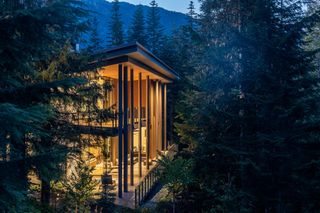
At 8,200 sq ft, the house occupies the southern part of a wedge-shaped plot south of Whistler Creek. The plan is tapered to follow the property line, with floor-to-ceiling glass looking out onto the trees and a relatively obscured and sober façade facing the public road, cloaking what is within.
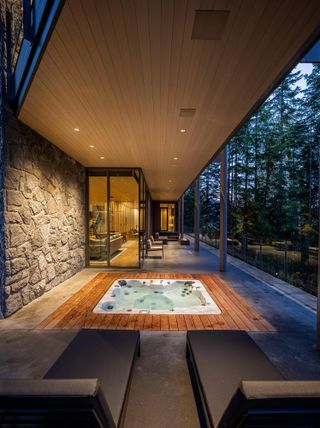
The relationship with nature is emphasised by the decks that wrap around the forest façade. They are covered by a prow-like roof that sails off into the trees, and are supported by a row of tall steel columns that evoke the region’s arrow-straight cedar and pine trees. The lower deck wraps around the house and includes a hot tub and a fire pit, while the upper deck level is a more private space accessed from the principal bedroom suite.
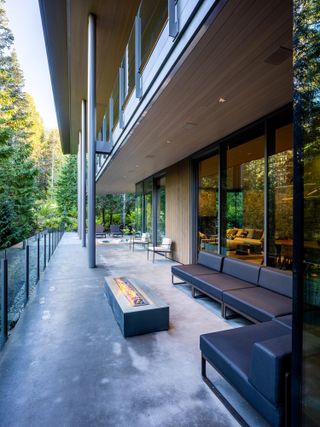
Throughout the project, the architects have used chunky basalt stone cladding to define key areas of the interior and exterior, which contrast with the fine joinery used throughout for floors, ceiling, cabinetry and key pieces of furniture.
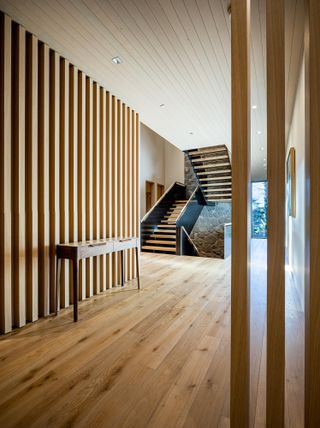
The architects describe this blend of solidity and openness as a way of achieving ‘the psychological comforts of shelter’. The interior is similarly subdivided, with thin wooden slat screens serving as partitions between the fluid series of main living rooms, which circulate around the main hallway.
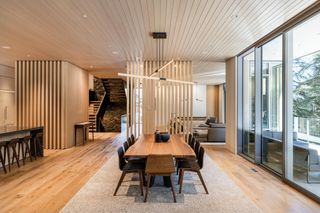
These include a living and dining room, a family room, games room and office, with a downstairs guest suite and a dedicated space for ski storage and changing.
Wallpaper* Newsletter
Receive our daily digest of inspiration, escapism and design stories from around the world direct to your inbox
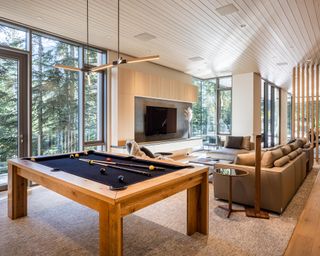
Upstairs there are five more ensuite bedrooms, with a double-height stairwell that rises up above the main entrance hall. The architects write that the ‘architecture immerses its inhabitants into the site's environment and offers a calming remedy to the cacophony of urban life’.
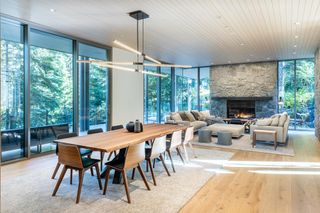
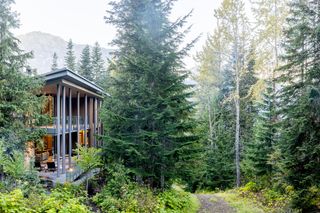
Jonathan Bell has written for Wallpaper* magazine since 1999, covering everything from architecture and transport design to books, tech and graphic design. He is now the magazine’s Transport and Technology Editor. Jonathan has written and edited 15 books, including Concept Car Design, 21st Century House, and The New Modern House. He is also the host of Wallpaper’s first podcast.
-
 Pininfarina Battista Reversario is a new one-off electric hypercar
Pininfarina Battista Reversario is a new one-off electric hypercarThe all-electric Pininfarina Battista Reversario is joining its aesthetic inverse in an ultra-select car collector’s garage. We take a look at a car built to a very precise order
By Jonathan Bell Published
-
 Fernando Jorge’s fluid diamond earrings show his curve appeal
Fernando Jorge’s fluid diamond earrings show his curve appealDiscover Brazilian jewellery designer Fernando Jorge's snake-like silhouettes and graphic shapes
By Hannah Silver Published
-
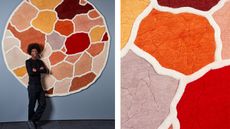 Abreham Brioschi debuts Ethiopia-inspired rugs for Nodus
Abreham Brioschi debuts Ethiopia-inspired rugs for NodusAbreham Brioschi teams up with luxury rug experts Nodus to translate visions from his heritage into a tactile reality
By Ifeoluwa Adedeji Published
-
 Modernist architecture: inspiration from across the globe
Modernist architecture: inspiration from across the globeModernist architecture has had a tremendous influence on today’s built environment, making these midcentury marvels some of the most closely studied 20th-century buildings; check back soon for new additions to our list
By Ellie Stathaki Published
-
 Downs House II inspires West Coast Modern campaign in Vancouver
Downs House II inspires West Coast Modern campaign in VancouverDowns House II, currently on the market in Vancouver, inspires a West Coast Modern campaign to save the modernist landmark
By Hadani Ditmars Published
-
 Toronto’s Rolex boutique wows with dynamic façade
Toronto’s Rolex boutique wows with dynamic façadeThis Rolex boutique in Toronto features a dynamic, wavy façade in CNC-cut limestone created by local architecture studio Partisans
By Ellie Stathaki Published
-
 Promenade Samuel-de Champlain is a riverside boulevard championing urban green
Promenade Samuel-de Champlain is a riverside boulevard championing urban greenPromenade Samuel-de Champlain in Quebec gives the city’s river back to its community, transforming a previously neglected urban space
By Tianna Williams Published
-
 Chez Léon is a contemporary Canadian retreat in the Quebec countryside
Chez Léon is a contemporary Canadian retreat in the Quebec countrysideThis Canadian retreat, an elegant update of the classic cabin in the woods, is part ski lodge, part tree house, combining traditional materials and stunning views with a light footprint
By Jonathan Bell Published
-
 House in High Park is a Toronto home to be discovered slowly
House in High Park is a Toronto home to be discovered slowlyHouse in High Park by Ian MacDonald Architect is a new-build home in Toronto that takes a problematic plot and transforms it into an exhilarating, contemporary residence
By Ellen Himelfarb Published
-
 This Québec school evokes a calming atmosphere in tune with nature
This Québec school evokes a calming atmosphere in tune with natureThis redesigned Québec school inspires a new paradigm in its architecture genre by creating a welcoming, home-like and nature-inspired environment
By Tianna Williams Published
-
 Canvas House’s wavy brick façade stands out in its suburban Toronto context
Canvas House’s wavy brick façade stands out in its suburban Toronto contextCanvas House by Partisans brings a wavy brick façade to its sleepy Toronto suburban neighbourhood
By Ellie Stathaki Published